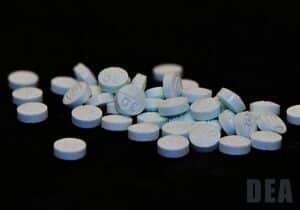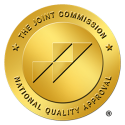What Are Muscle Relaxers
Muscle relaxants are medications prescribed primarily for relieving acute muscle pain and discomfort associated with conditions like back pain, neck pain, or tension headaches. They work by targeting excessively tight muscles, often caused by spasms—unwanted, repetitive contractions that lead to tension and sometimes cramps. Certain injuries, particularly those affecting the spinal cord, might disrupt communication between the brain and muscles, leading to involuntary contractions and pain, where muscle relaxants offer relief.
There are two main categories of muscle relaxants: neuromuscular blockers and spasmolytics. Neuromuscular blockers, which induce temporary paralysis, are used in surgical or emergency settings and are not considered prescription muscle relaxants. Spasmolytics, the kind prescribed for muscle pain, act on the central nervous system to alleviate discomfort.
Commonly prescribed spasmolytics include carisoprodol (Soma) and cyclobenzaprine (Flexeril), intended for short-term use, specifically not beyond three weeks, for acute pain rather than chronic conditions. Soma, known for its potent effects, is classified as a Schedule IV controlled substance by the DEA, highlighting its potential for abuse and dependence, albeit considered low risk.
Are Muscle Relaxers Addictive?
Muscle relaxants like carisoprodol and diazepam are classified as controlled substances, which indicates they have the potential for addiction and could lead to withdrawal symptoms if stopped suddenly due to dependence. If you have a history of substance abuse personally or in your family, it’s wise to avoid these drugs.
Should you find yourself becoming dependent on carisoprodol or diazepam, or if they stop being effective at the dose prescribed, it’s crucial not to increase your dosage on your own. Instead, get in touch with your healthcare provider for advice.
While not all prescription muscle relaxants are considered controlled substances or carry a high risk of addiction, there’s still a possibility for abuse. Always follow your doctor’s instructions and discuss any concerns about your medication with them. For those grappling with muscle relaxers addiction, Iris Wellness Group is ready to provide support and assistance. Contact us today to start your drug-free life.
What Are the Most Addictive Muscle Relaxers?
Some muscle relaxants are particularly known for their higher risk of addiction and dependence when not used correctly. Here’s an overview of the ones with notable concerns:
- Soma (Carisoprodol): Known for its sedative effects, carisoprodol can be habit-forming, especially when taken in doses higher than prescribed to achieve euphoria.
- Valium (Diazepam): As a benzodiazepine, diazepam has significant addictive potential. It’s used for anxiety but also acts as a muscle relaxant, making it susceptible to misuse.
- Flexeril (Cyclobenzaprine): While cyclobenzaprine is not a controlled substance, it may still lead to addiction. Users might increase their dosage to achieve the desired effects, which is risky.
- Robaxin (Methocarbamol): Methocarbamol is perceived as having a lower risk of addiction, yet dependency can occur if it’s not used according to medical advice.
- Zanaflex (Tizanidine): Although addiction to tizanidine is less common, misusing this medication can still result in dependency issues.
Remember, the risk of addiction varies among individuals, but these examples are noted for their potential for abuse. Always use medication as directed by a healthcare provider.
Side Effects of Muscle Relaxers
Common side effects associated with muscle relaxants are:
- Feeling sleepy or drowsy
- Experiencing dizziness
- Feeling agitated
- Becoming easily irritated
- Having headaches
- Feeling nervous
- Experiencing dryness in the mouth
- A drop in blood pressure
How Do Muscle Relaxers Work?
Muscle relaxants work by damping down activity in the central nervous system, effectively reducing its output. This action helps block the transmission of pain signals to the brain. Moreover, by influencing muscle tone across the body, some muscle relaxers are particularly useful in managing chronic conditions like multiple sclerosis, which leads to a widespread reduction in muscle tone, or cerebral palsy, characterized by severe muscle spasms.
The impact of these medications can be felt quickly, typically within an hour, and their effects may persist for about four to six hours. Due to their sedative nature, muscle relaxants can affect daily activities by causing:
- Drowsiness
- Dizziness and headaches
- Feelings of agitation, irritability, and nervousness
- A decrease in blood pressure
It’s generally recommended to use them in the evening to minimize interference with daytime tasks.
Muscle Relaxer Abuse
The potential for abuse and addiction to muscle relaxants is significant, with prolonged usage leading to tolerance and dependency, particularly noted with Soma. As such, these medications are typically recommended for short-term use, generally not exceeding a duration of 2-3 weeks.
Many individuals misuse muscle relaxers, consuming them alone or alongside other illicit substances for non-medical purposes. This misuse often aims to evoke or intensify sensations of euphoria and detachment. The Drug Enforcement Administration has identified Soma as one of the drugs most frequently subject to abuse in the United States. Flexeril also sees substantial abuse, with over 12,000 emergency department visits in 2010 and more than 10,000 calls to Poison Control Centers in 2016 attributed to this medication.
How Common is Muscle Relaxer Addiction?
The prevalence of muscle relaxers addiction has been on the rise, fueled by greater accessibility and usage of these medications. Often, individuals are not fully aware of the risks involved in misusing muscle relaxers, particularly when taken outside the bounds of medical guidance. Addiction to muscle relaxers can lead to a host of severe outcomes, encompassing physical, mental, and social repercussions such as increased tolerance, the risk of overdose, and even mortality. Additionally, the withdrawal process from muscle relaxers can present intense and challenging symptoms.
Signs and Symptoms of Muscle Relaxer Addiction
Muscle relaxer addiction manifests through a range of signs, touching both the physical and psychological realms of health. On the physical side, signs include building a tolerance to the medication, experiencing strong cravings, noticeable sedation, difficulty in coordination or maintaining balance, breathing challenges, and unusually dilated pupils.
From a psychological standpoint, addiction may reveal itself through an obsessive focus on obtaining and using the drug, experiencing a euphoric state while under its influence, and showing irritability or aggression in its absence. Other psychological indicators include concentration difficulties, mood swings, confusion, memory lapses, and experiencing either insomnia or excessive sleepiness without the drug’s presence. Additionally, paranoia and broader mental health complications can emerge as part of the addiction spectrum.
Withdrawal Symptoms of Muscle Relaxers Addiction
Withdrawal symptoms from muscle relaxer addiction can widely vary based on individual factors such as duration of use and dosage. Common symptoms experienced during withdrawal include:
- Anxiety
- Restlessness
- Difficulty sleeping
- Nausea and vomiting
- Increased sweating
- Shaking or tremors
- Pain in muscles
- Muscle cramps
- Headaches
- Feeling dizzy
In more severe cases, individuals might encounter seizures or hallucinations.
The duration of these withdrawal symptoms can range from a few days to several weeks, and sometimes even longer. For anyone struggling with addiction to muscle relaxers, seeking professional assistance is crucial. Withdrawal can present serious risks without the oversight of medical professionals. Enrolling in a detoxification program under the care of healthcare experts is the most secure approach to managing and eventually overcoming dependence on muscle relaxers.
Combining Muscle Relaxers with Other Drugs
Misusing muscle relaxers, especially in conjunction with other substances like opioids, benzodiazepines, or antidepressants, can greatly heighten the risk of addiction. While muscle relaxants may not always be the sole substance abused, their combination with other central nervous system depressants amplifies their impact, leading to more potent effects.
The National Library of Medicine highlights that while skeletal muscle relaxants might not always be the primary substance of abuse, their concurrent use with substances like alcohol or narcotics significantly increases their effect, raising the addiction risk. Individuals with a background of mental health issues or substance use disorder are particularly vulnerable to developing an addiction to muscle relaxers.
Risks of Mixing Muscle Relaxers with Alcohol
The simultaneous use of muscle relaxants and alcohol poses serious dangers due to their combined effect on slowing the central nervous system, which can result in confusion, nausea, slurred speech, and memory issues. This combination can dangerously decrease breathing and heart rates, possibly leading to respiratory depression. The sedative effects of alcohol and muscle relaxers can induce profound drowsiness, making activities like driving hazardous.
Treatment Options for Muscle Relaxers Addiction
For those navigating the challenges of muscle relaxer addiction, a variety of treatment avenues exist, each tailored to the individual’s needs and circumstances. These treatments include:
- Professional Counseling: Offers strategies for managing cravings and building resilience against addiction through individualized support.
- Cognitive-Behavioral Therapy (CBT): Focuses on altering negative thought patterns related to drug use, enabling individuals to adopt healthier stress management techniques.
- Support Groups: Facilitates a shared space for individuals to connect, share their journeys, and glean insights from the experiences of peers also working towards recovery.
Additionally, structured treatment programs provide a comprehensive approach to overcoming muscle relaxer addiction, including:
- Intensive Outpatient Programs (IOP): Designed for those who require significant support but can maintain their daily commitments.
- Outpatient Treatment Programs: Offer flexibility for individuals to receive treatment while continuing with their day-to-day lives.
- Partial Hospitalization Programs (PHP): Provide a high level of care and support, bridging the gap between inpatient and outpatient services.
Each of these options is geared towards fostering recovery, promoting healthier coping mechanisms, and supporting individuals through their journey to overcome addiction.
Overcoming Muscle Relaxers Addiction at Iris Wellness Group
Confronting addiction is a challenging journey, but making the choice to seek freedom from substance dependence marks a significant turning point. With appropriate guidance and sustained support, overcoming addiction and moving towards lasting recovery is achievable.
At Iris Wellness Group, we are recognized as a leading facility for addressing various forms of drug and alcohol addiction, offering comprehensive insights into the complex nature of addiction. Our commitment is to provide a welcoming and non-judgmental space for individuals ready to embark on the path to recovery.
If you or someone you care about is searching for professional help for muscle relaxer addiction in Chattanooga, TN, we invite you to contact us. Discover more about our tailored treatment plans designed to support each person’s unique recovery process.










